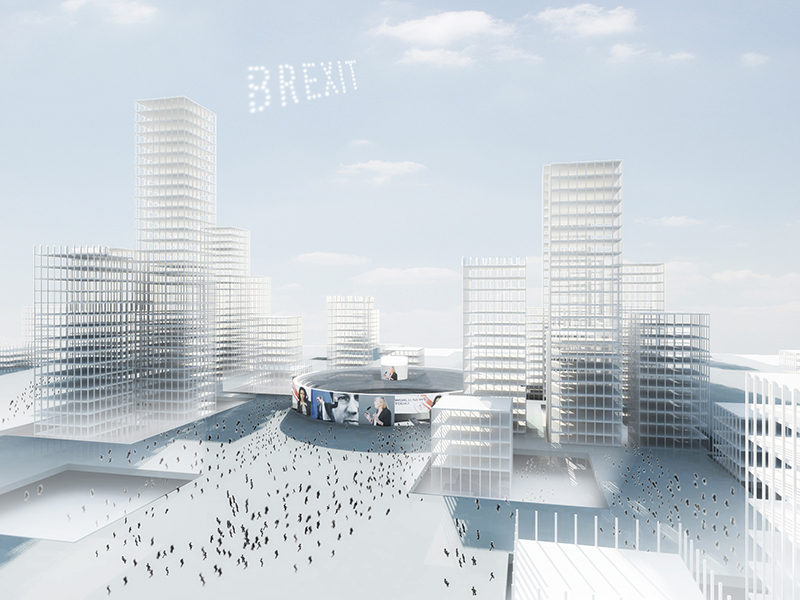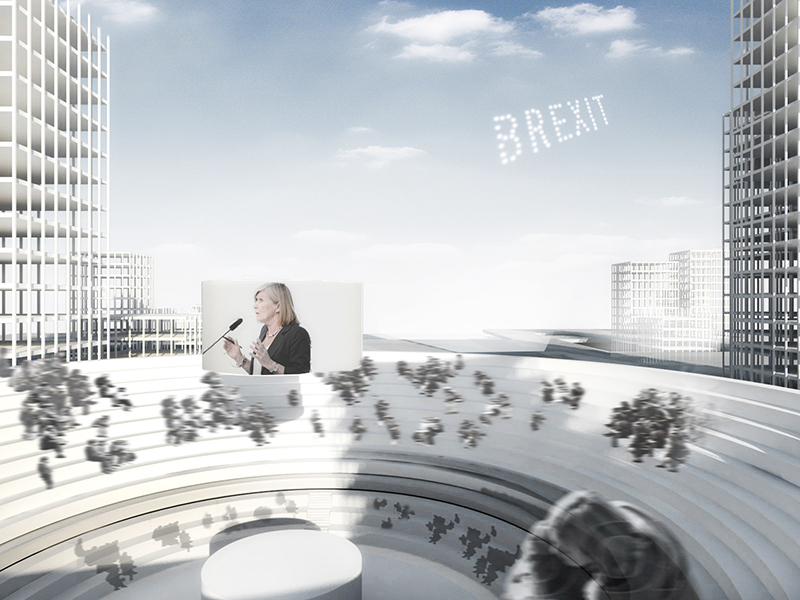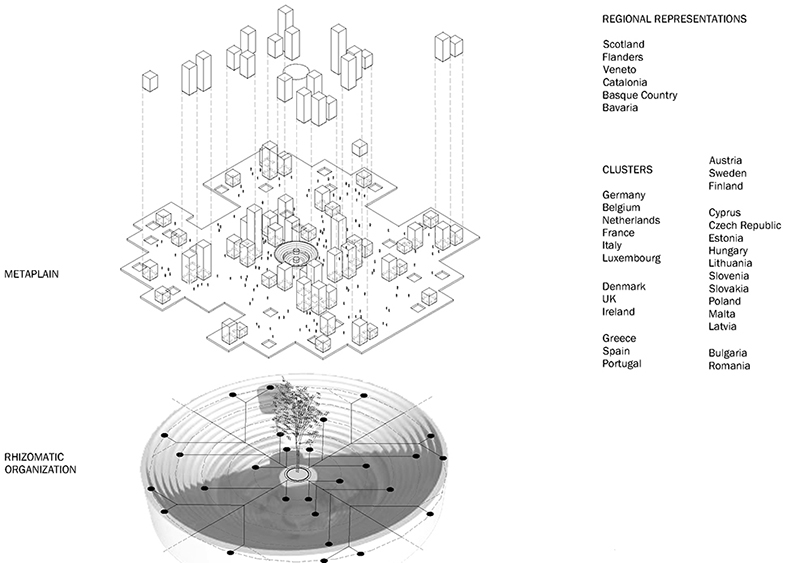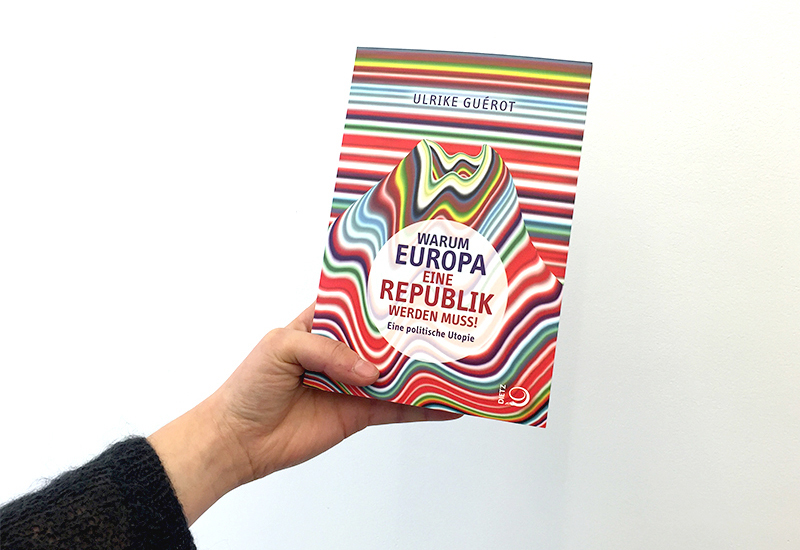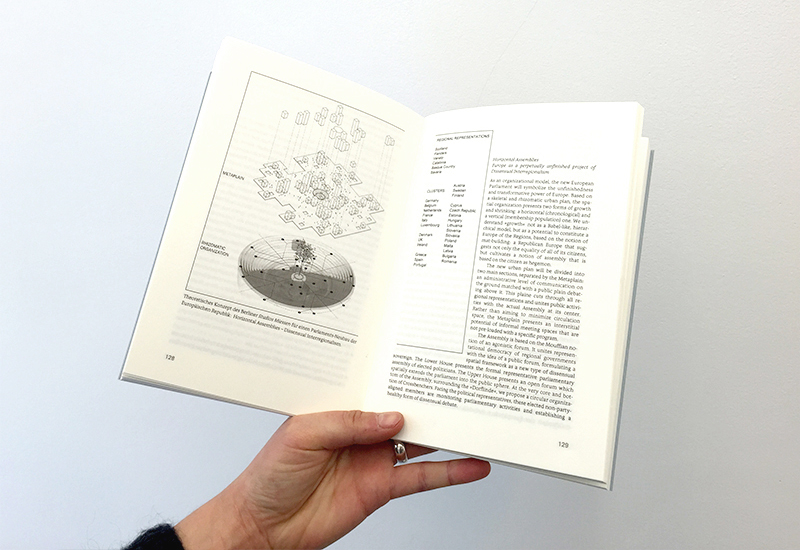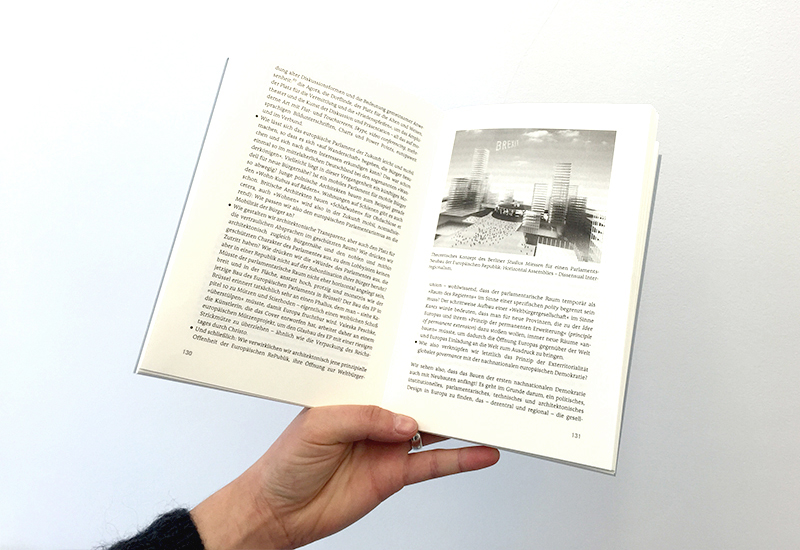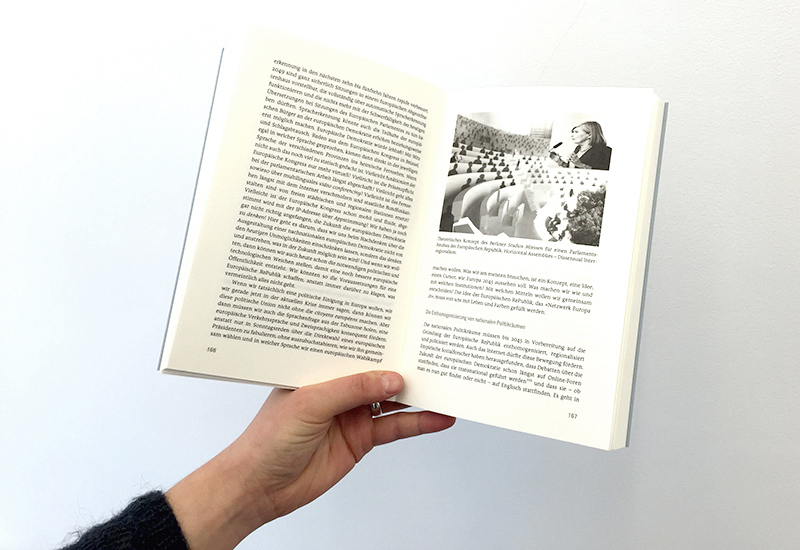Ulrike Guérot: European Republic
Horizontal Assemblies
2016
Commissioned by Ulrike Guérot.
A contribution to the book Warum Europa Eine Republik Werden Muss! Eine politische Utopie
- Text and images by Studio Miessen
- Project Leader: Markus Miessen
- Team: Berta Cusó, Felix Frederick McNmara
Europe as a perpetually unfinished project of Dissensual Interregionalism
As an organizational model, the new European Parliament will symbolize the unfinishedness and transformative power of Europe. Based on a skeletal and rhizomatic urban plan, the spatial organization presents two forms of growth and shrinking: a horizontal (chronological) and a vertical (membership population) one.
We understand “growth” not as a Babel-like, hierarchical model, but a potential to constitute a Europe of the Regions based on the notion of mat-building: a Republican Europe that suggests not only the equality of all of its citizen, but cultivates a notion of assembly that is based on the citizen as hegemon.
The new urban plan will be divided into two main sections, separated by the Metaplain: an administrative level of communication on the ground matched with a public plain floating above it. This plain cuts through all regional representations and unites public activities with the actual Assembly at its center.
Rather than aiming to minimize circulation space, the Metaplain presents an interstitial potential of informal meeting spaces that are not pre-loaded with a specific programme.
The Assembly is based on the Mouffian notion of an agonistic forum. It unites representational democracy of regional governments with the idea of a public forum, formulating a spatial framework as a new type of dissensual sovereign. The Lower House presents the formal representative parliamentary assembly of elected politicians. The Upper House presents an open forum, which spatially extends the parliament into the public sphere. At the very core and bottom of the
Assembly, surrounding the “Dorflinde”, we propose a circular organization of Crossbenchers. Facing the political representatives, these elected non-party-aligned members are monitoring parliamentary activities and establish a healthy form of dissensual debate.
